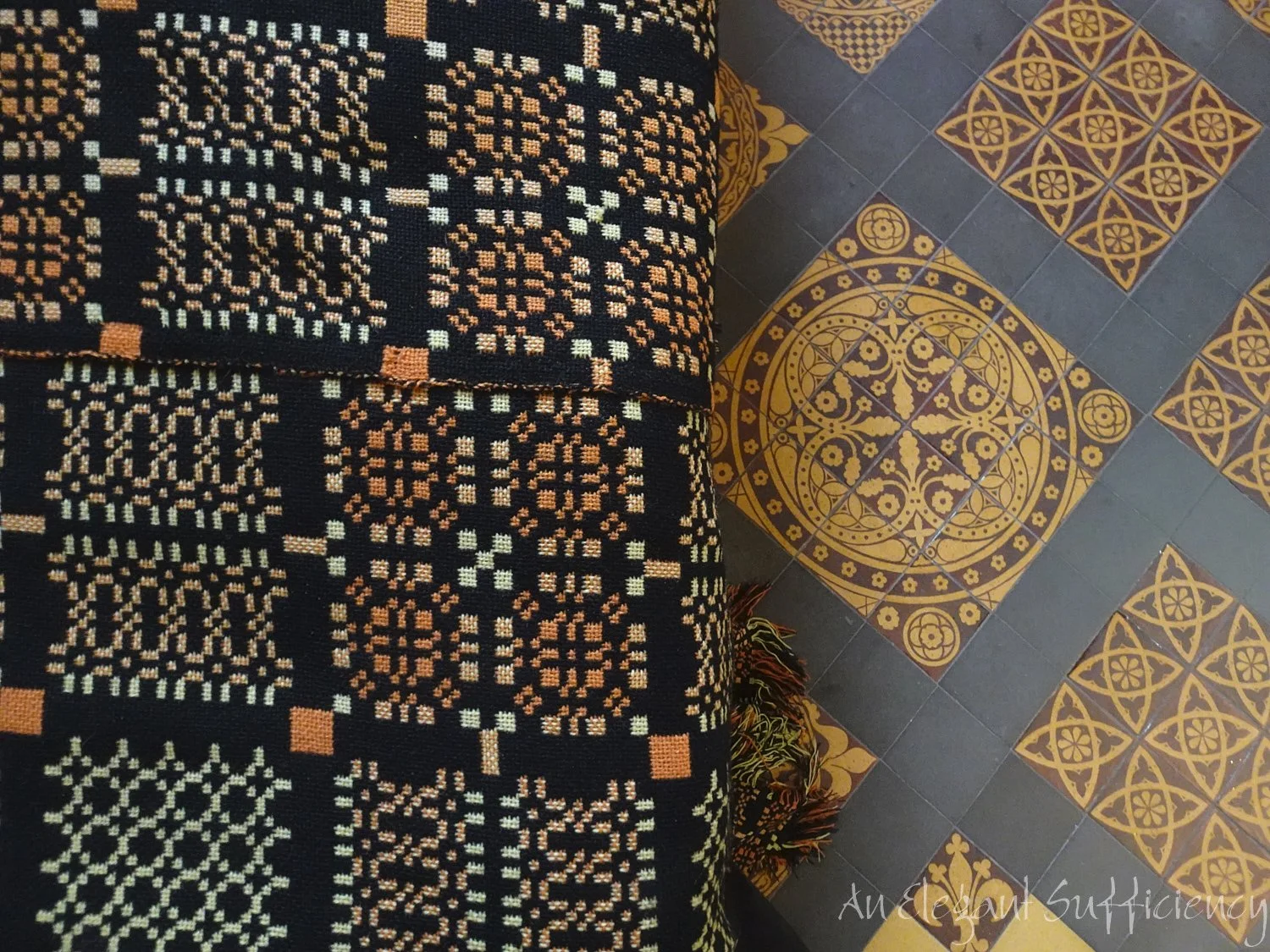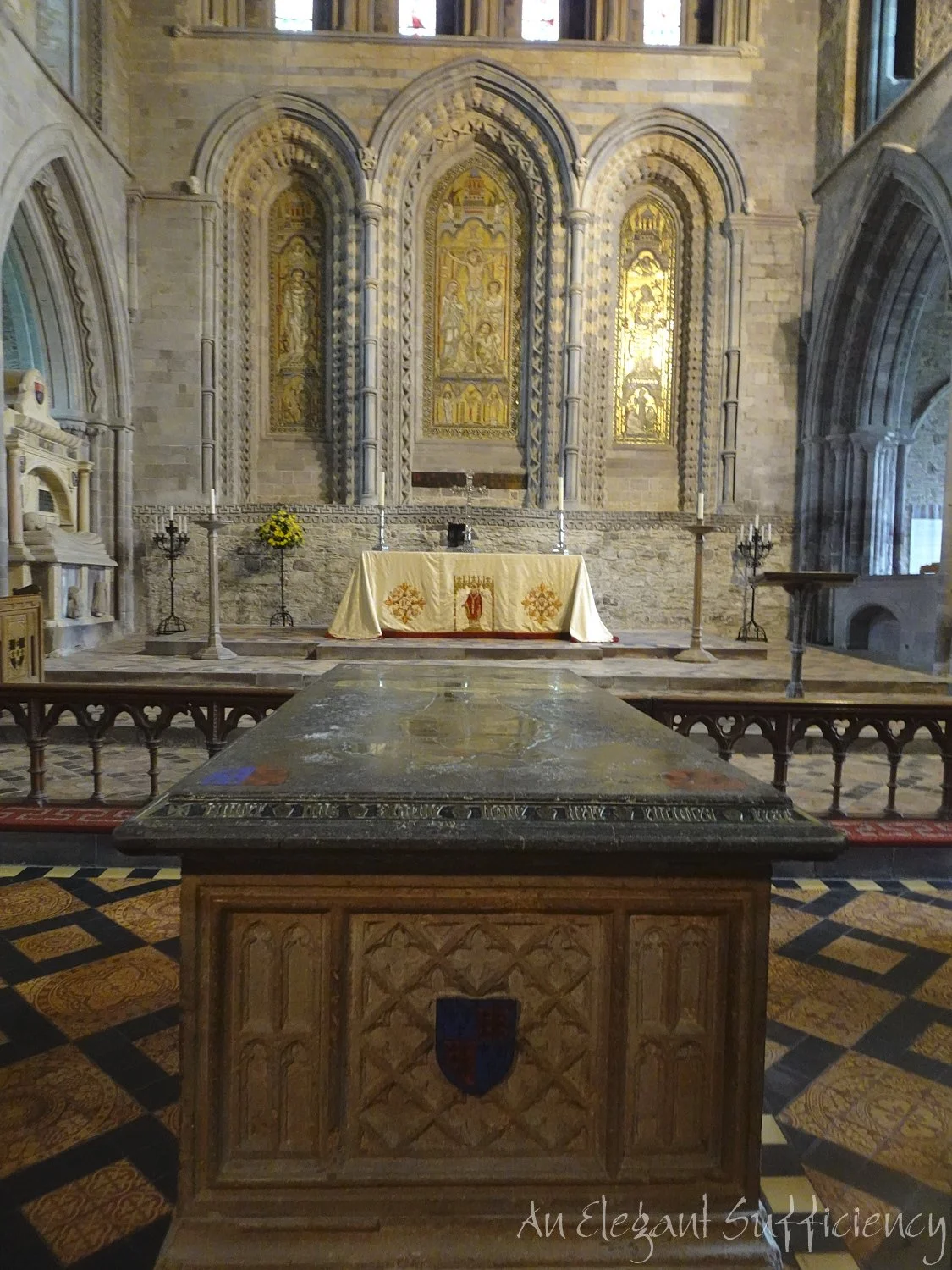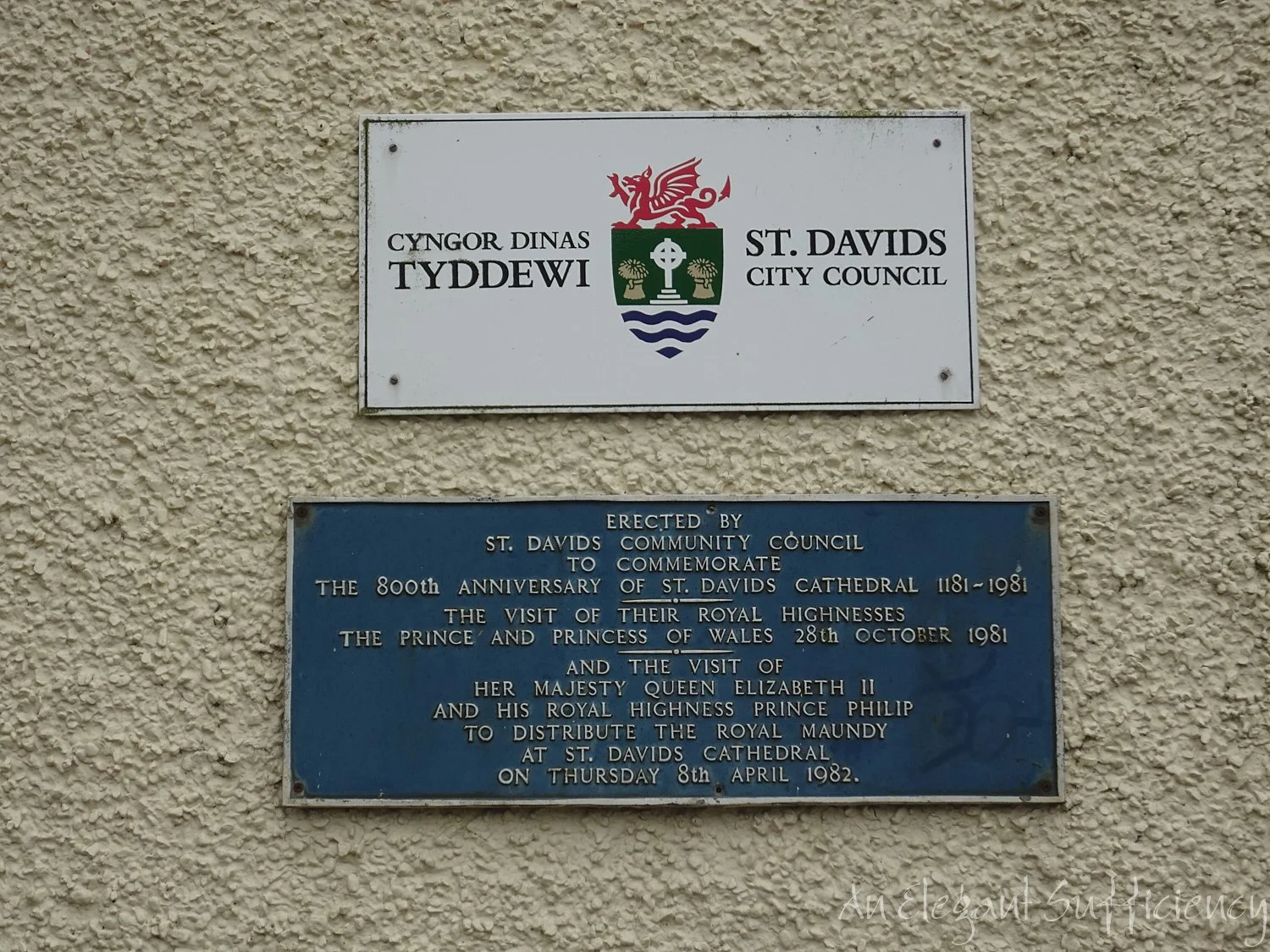Think Small
Sadly, we didn’t wake to blue skies for our day in the UK’s smallest city, but sallied forth all of a couple of hundred metres across the road to our first destination of the day.
Oriel y Parc is a great place to begin, being a museum, gallery, cafe and visitor centre all under the same roof. We enjoyed pottering about the current exhibition of archaeological finds admiring the clever, inclusive interpretations of the items on show. Initially, it seemed that the information was aimed squarely at families and the younger visitors who would surely be interested in the Ghost Slug and the many fossils found by beachcombers. But look a little more closely and all the more specialist information was there too. It’s far from easy to present all of this without totally overwhelming the actual exhibit and of course, it was all in both English and Welsh too. Full marks to the designer on that score!
I enjoyed the work of artist Linda Norris in an adjacent room too. Fragment Dresser was created by means of a projected Welsh Dresser shape on the wall, upon which hung glass shapes - cups, saucers, teapots - each one engraved with poetry, creating shadows in the framework of the dresser itself. A clever and very apt concept, beautifully put together.
Before leaving Oriel y Parc I not only made sure I had a map in my pocket for later, but also took the opportunity to get my bearings around this city! Here we were, at the bottom left hand corner by the bus stop, and we wanted to make our way right up there to the Cathedral. It might take us all of, let’s see, fifteen minutes !
I’m sure, for those who live here, the “small” theme must wear a little thin. In the Summer months, these streets must be packed and judging from the number of double yellow “no parking” areas, my guess is that traffic and parked cars must be a problem too. But this morning, we had the city to ourselves, or so it seemed.
We were last here some forty years ago we thought and my Hero could remember the Cathedral clearly. I could not remember it at all. What’s curious is that unlike most other such structures which can be seen from miles around, St Davids is settled into a valley, tucked away and largely out of sight.
The view from the gatehouse at the end of the car park shows the enormity of the site and the way in which the Cathedral sits alongside the ruins of the Bishops Palace, comfortably surrounded by the green landscape.
A plaque on the gatehouse commemorated a visit by HM The Queen in 2001. My Hero and I had been trying to work out the year of our last visit, based on the Royal Maundy service being held here, attended by my parents in law. I knew we had come here on the day before and that we had stayed in their home in Carmarthen on the day itself with strict instructions regarding use of the downstairs bathroom, which had been identified for the sole use of HMQ if required on her journey home! (My Father in Law was Chief Constable at the time). This was surely before 2001 however.
We made our way down to the entrance, arriving at the same time as a group from a local school, who stood aside to let us pass.
We returned the favour to them though, taking a seat at the back of the nave to look at the glorious surroundings and enjoy a delightful conversation with the steward who had welcomed us with a smile and a cheery greeting.
My initial impression was of asymmetry, which I rather liked. The cathedral was being prepared for a St Davids Day concert that evening, with music and marching from the band of the Welsh Guards, so there were small stacks of chairs here and there and an unconventional seating layout around the edges.
Perhaps that’s the reason why I paid more attention to the beautiful medieval floor tiles? I love the way the patterns mix and sit alongside one another like this.
The more so here, where a stack of chairs had been draped with a length of Welsh “tapestry” which juxtaposed so nicely with another set of floor tiles. So much inspiration for a girl with a sketchbook!!
The theme of many information panels around the cathedral was “Think Small”, echoing the phrase said to be St David’s last words, “Gwnewch y pethau bychain mewn bywyd” Do the little things in life.
I seemed to notice the small things too, such as this book stand with the inscription “sometime songster in this cathedral”. Perhaps if I had turned it around I’d have found a name or more details, but for now, it was enough.
Around the central part of the nave, the floor is a little smarter, with inlaid coats of arms, which I guessed are of Bishops. A quick search online confirms that Bishop John Jenkinson served from 1825 till his death in 1840, so I presume this to be his insignia.
Coincidentally, the most distinctive chapel which caught my eye was donated by - and contains the tomb of - John Jenkinson’s Granddaughter, the Viscountess of Maidstone. There was just something about the light in that corner which was particularly lovely.
In fact, it was these little pools of light here and there which drew my eye to several places, including through this opening to the Holy Trinity Chapel,
which has spectacular fan vaulting.
Last but far from least was the large tomb in front of the high altar, that of Edmund Tudor, father of Henry VII, the first monarch of the Tudor dynasty and Grandfather of Henry VIII.
My Hero puzzled over the inscription a while, before being handed the transcription by the same cheerful lady who’d welcomed us on arrival. What an epitaph, eh?
Taking the exit which led to the Bishops Palace, we found ourselves by the River Alun, confirming all that we’d been taught about the site of the early monasteries beside fast flowing fresh water. Taking the bridge rather than the ford, we made our way over.
We admired the modern wrought iron gates for a while, looking beyond at the ruins of the palace, wondering if we really felt like scrambling around such a place right now?
A cup of coffee seemed more attractive!
Returning into the city centre in search of hot drinks and maybe a Welsh cake or two we passed by the City Hall.
Noting the plaque as we went and the significant date, 8th April 1982.
Where did those 41 years go?
St Davids Cathedral has a rather good website with a 360° tour here




































